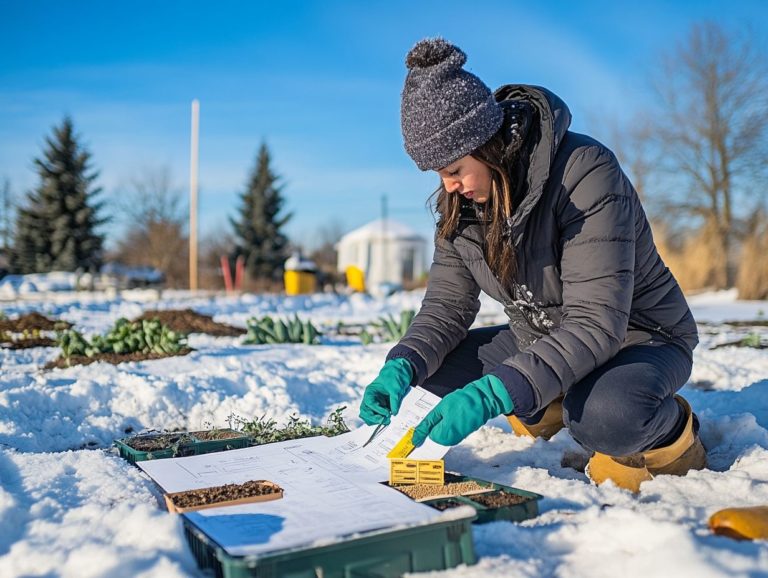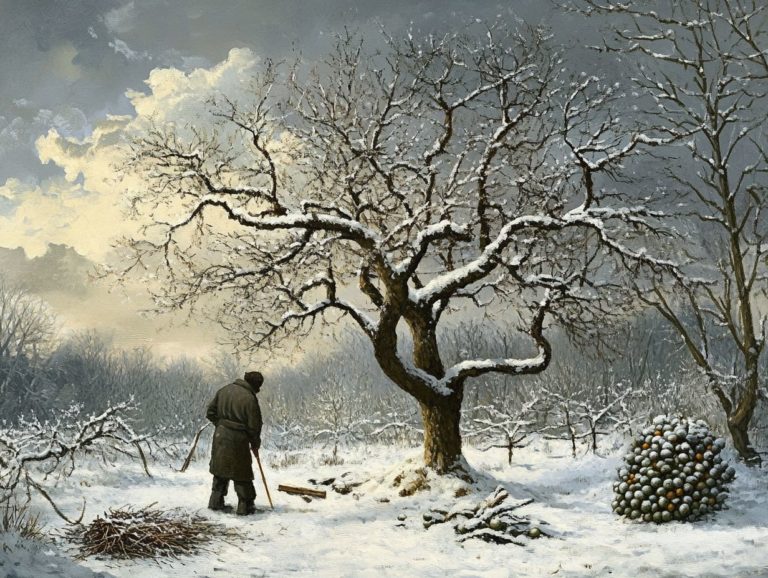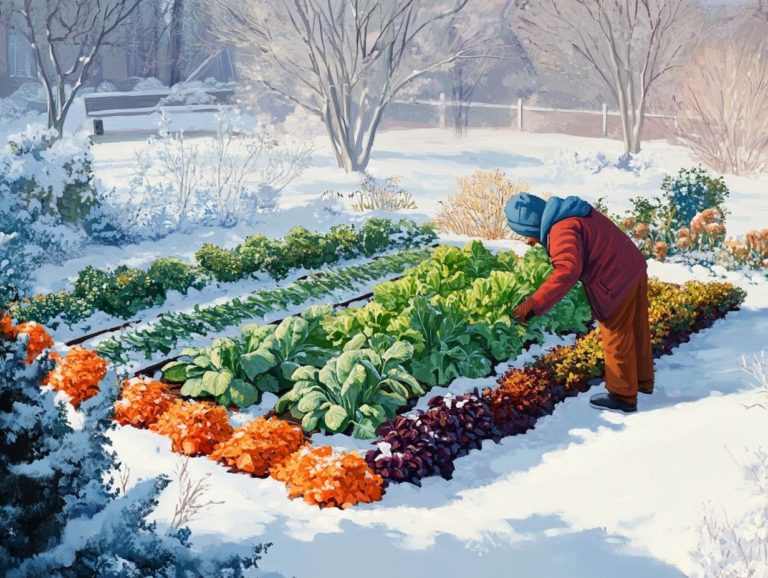How to Identify Cold-Weather Pest Problems
As temperatures dip, many homeowners unwittingly welcome a variety of cold-weather pests into their homes. These include common winter pests like rodents and spiders.
While it s easy to associate pest issues with the warmer months, these resilient invaders can thrive even in the winter chill.
This article will help you identify cold-weather pests, recognize the signs of an infestation, and implement strategies to prevent and manage these uninvited guests.
Stay ahead of pests this winter!
Contents
- Key Takeaways:
- Understanding Cold-Weather Pest Problems
- Common Cold-Weather Pests
- Signs of Pest Infestation in Cold Weather
- Preventing Cold-Weather Pest Problems
- Managing Existing Pest Infestations
- Preparing for Cold Weather Pest Control
- Frequently Asked Questions
- How do I identify cold-weather pest problems and manage pest identification?
- What are some common cold-weather pests?
- What can I do to prevent cold-weather pest problems?
- How can I distinguish between a cold-weather pest and a year-round pest?
- Are cold-weather pest problems more common in certain regions?
- Should I hire a professional to address a cold-weather pest problem?
Key Takeaways:
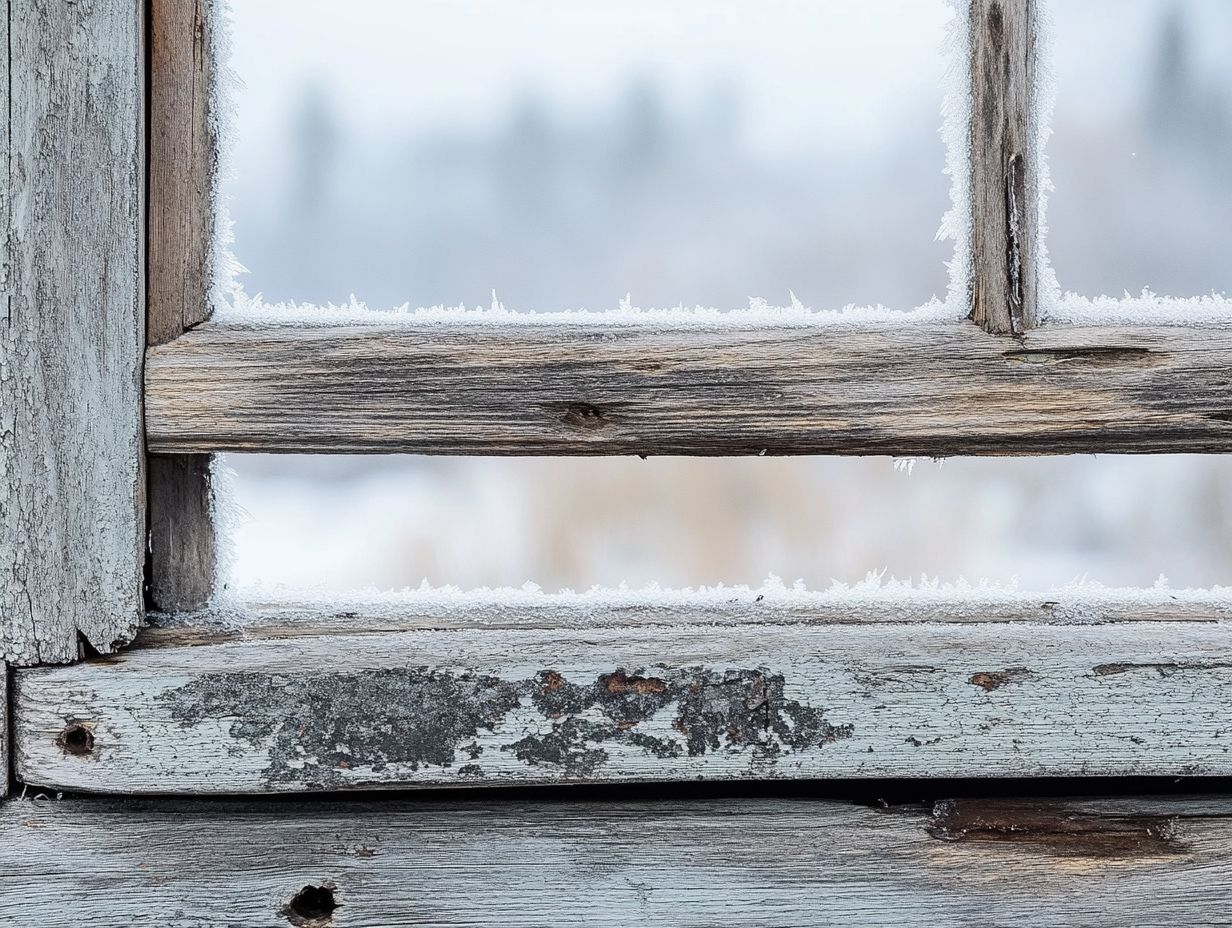
- Pests can invade your home year-round, even in winter. Know which pests thrive in colder weather.
- Common cold-weather pests include house mice, Norwegian rats, Brown Recluse spiders, and cockroaches. Look out for signs of activity and damage.
- Prevention is key to avoiding cold-weather pest problems. Effective strategies include sealing entry points and maintaining a clean, clutter-free environment.
Understanding Cold-Weather Pest Problems
Knowing about cold-weather pests helps you keep your home pest-free this winter. As temperatures drop, many pests seek shelter indoors for warmth and food, which can lead to significant infestations if not addressed quickly. Learning how to identify fungal pests in winter is crucial for effective pest management during this season.
Common winter pests include rodents, spiders, and cockroaches. Each has behaviors that can escalate into serious issues without proper action to prevent pests.
What are Cold-Weather Pests?
Cold-weather pests are insects and rodents that become particularly active during winter, seeking warm environments to survive.
These pests have special traits that help them survive the cold. For example, house mice often infiltrate your spaces in search of food and shelter, nesting in hidden corners, cabinets, or attics. German cockroaches reproduce rapidly in warm indoor areas, leading to challenging infestations to manage.
You might also see other common winter pests, like cluster flies and boxelder bugs, as they invade homes to escape the harsh elements. By understanding the behaviors of these pests, you can implement effective strategies to keep your home comfortable.
Common Cold-Weather Pests
Common cold-weather pests invade homes during winter, with rodent infestations being particularly troublesome.
Their remarkable reproductive capabilities and adaptability to indoor environments make them a challenge that you should recognize.
Types of Pests to Watch Out For
Prepare for winter by watching for pests, including house mice, Norwegian rats, Brown Recluse spiders, and cockroaches, that may invade your home.
Rodents like mice and rats create nests in attics and basements, gnawing on electrical wires and potentially compromising your home s structure. Cockroaches thrive in warm, humid areas like kitchens and bathrooms, where they can contaminate your food and surfaces. Spiders may settle in quiet corners, becoming an eyesore for many homeowners.
Understanding the behaviors and preferences of these pests is essential for preventing infestations and safeguarding your living space.
Signs of Pest Infestation in Cold Weather
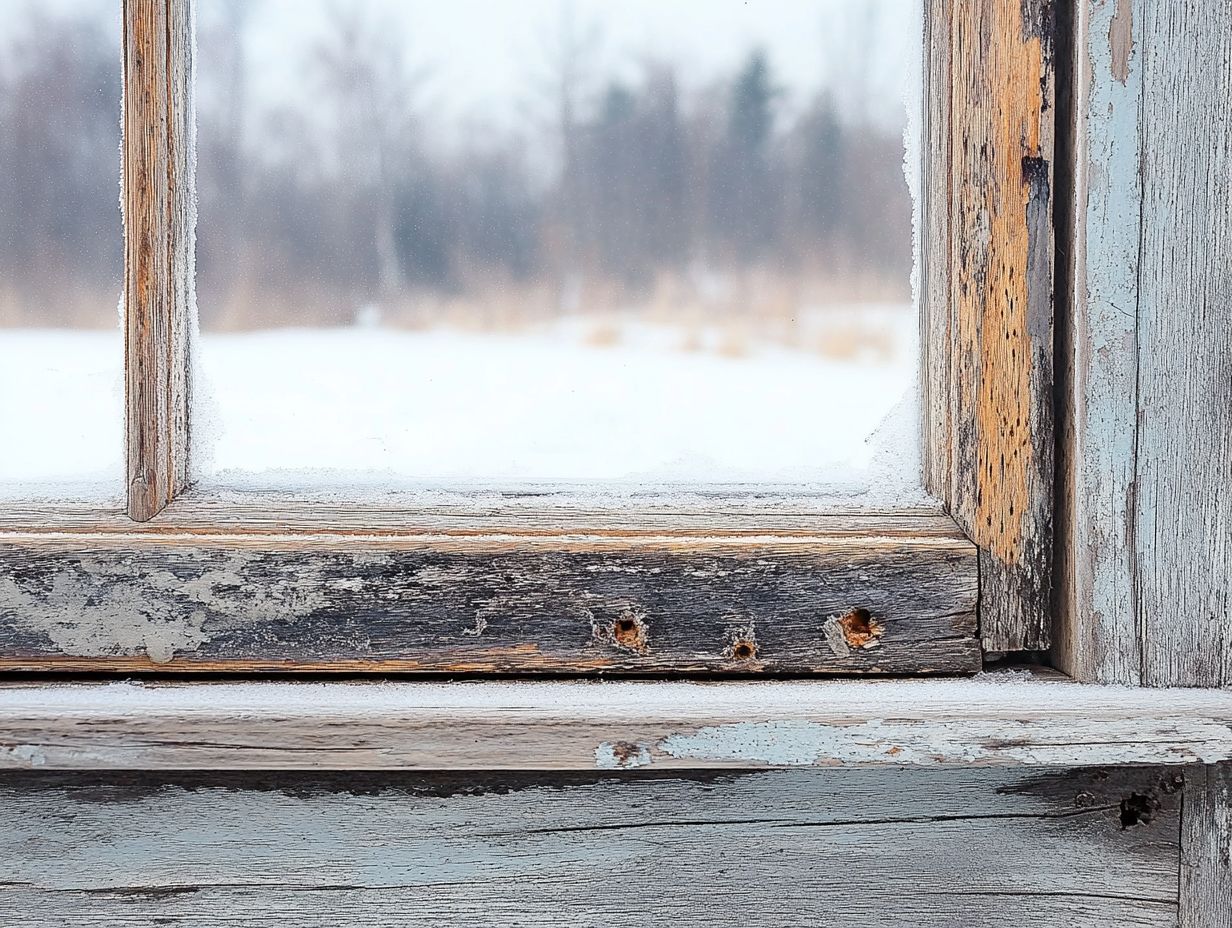
Recognizing the signs of pest infestation during the colder months is crucial for effective pest management. By understanding pest behavior in cold weather, early detection enables you to prevent substantial damage and mitigate health risks linked to common winter pests.
Identifying Pest Activity and Damage
Identifying pest activity and understanding the potential damage they may cause is essential for homeowners eager to maintain a pest-free sanctuary during the winter months. Learning how to protect plants from cold-climate pests can be particularly helpful in achieving this goal.
As this season unfolds, many pests will look for a cozy spot indoors, making vigilance key. Keep an eye out for visual signs such as chewed wires, droppings, and unusual markings on walls or furniture that signal the presence of unwelcome winter guests.
Watch for behaviors like an increase in nocturnal activity or mysterious noises emanating from the walls. These can provide critical clues to an infestation. By accurately identifying these pests, you can address the issue promptly and select the most effective control methods tailored to the specific type, ultimately fortifying your home against any further damage.
Preventing Cold-Weather Pest Problems
To effectively prevent cold-weather pest problems, adopt a variety of approaches. This involves pest-proofing your home, managing potential food sources, and implementing strong moisture control measures. For more insights, refer to understanding pest life cycles in cold weather. By doing so, you create an environment that discourages pests from seeking refuge indoors.
Effective Pest Control Strategies
Implementing effective pest control strategies is crucial to reduce the risk of winter infestations, particularly regarding those pesky critters seeking warmth during the colder months.
By taking proactive measures, including regular vacuuming to remove food particles, you can significantly minimize unwelcome visitors and create a more comfortable living space. Simple DIY methods, like sealing potential entry points around your windows and doors, can effectively keep pests at bay.
Additionally, decluttering both inside and outside your home helps limit potential hiding spots for pests. While these methods can be quite effective on their own, enlisting the assistance of professional pest control services can offer targeted solutions and peace of mind, ensuring that any infestations are swiftly addressed.
Managing Existing Pest Infestations
Manage pest infestations promptly during winter to ensure your home stays safe. This requires your immediate attention and a strategic blend of treatment options and techniques. Act quickly to protect your home from pests!
Treatment Options and Techniques
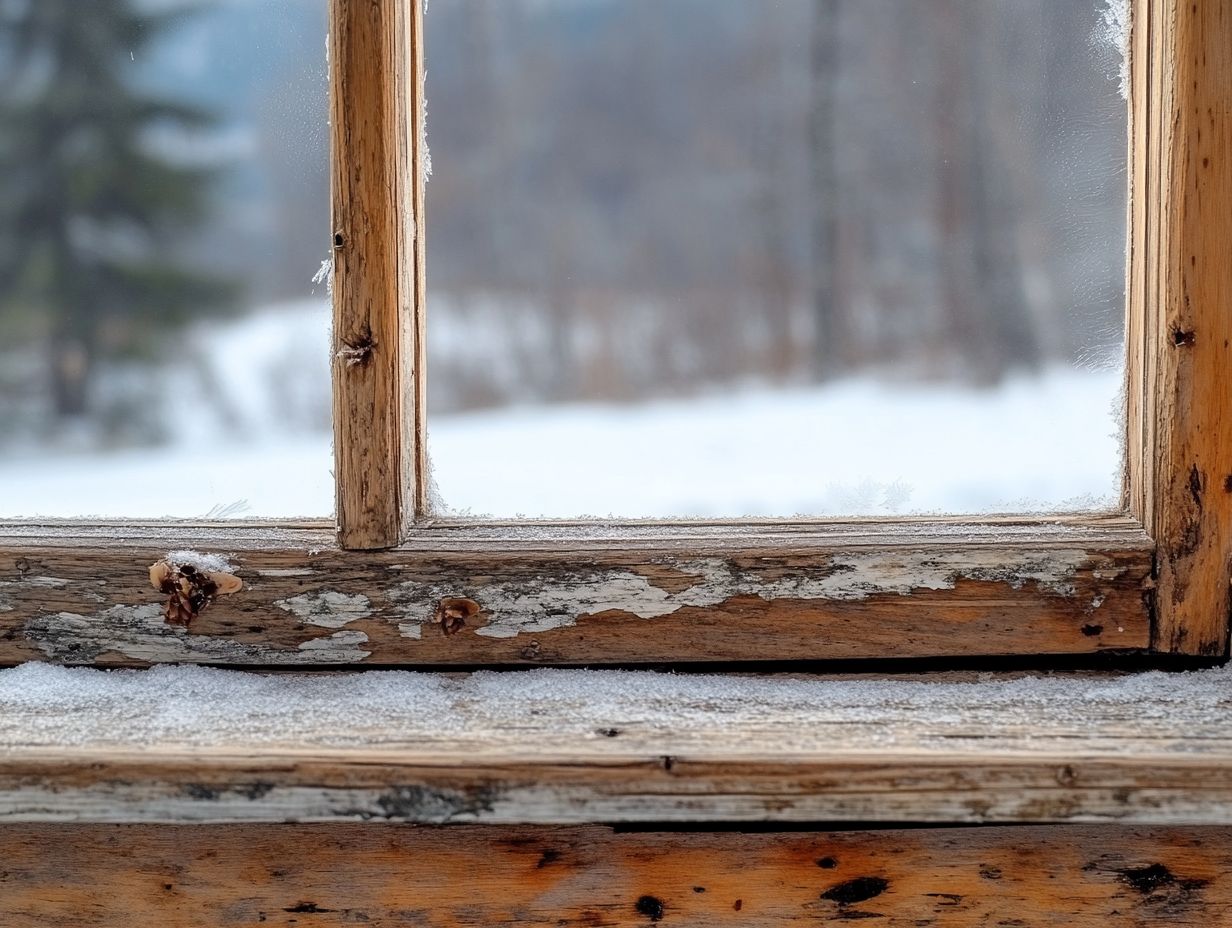
When faced with pest infestations, you have various treatment options and techniques at your disposal, from professional pest control services to effective DIY methods that can shine in specific situations.
Professional exterminators come equipped with expertise and powerful solutions, making them your go-to choice for severe infestations or when health risks are on the line. Conversely, simple, natural remedies may work wonders for mild issues or serve as excellent preventative measures.
Embracing integrated pest management principles a method that combines different ways to control pests effectively like eliminating food sources, sealing entry points, and maintaining a clean environment can significantly lower the chances of future pest problems. Understanding the unique needs of your home will enable you to choose the most suitable and effective approach.
Preparing for Cold Weather Pest Control
Preparing for cold weather pest control is crucial to safeguard your home against the common winter pests that seek warmth and shelter during the chilly months. By taking proactive steps and employing the top cold-climate pest management strategies, you can ensure your living space remains a fortress against these unwelcome intruders.
Don t wait! Take charge now! Start implementing these strategies today to protect your home from winter pest infestations.
Steps to Take Before Winter
Taking proactive steps before winter arrives is essential for keeping pests out of your home. It helps prevent infestations from winter nuisances, including seasonal pests and outdoor pests.
By honing in on specific actions, you can effectively seal places where pests can enter, like those annoying cracks around your windows and doors. It’s equally important to manage your outdoor environment. Keeping your gutters clean and eliminating standing water can deter unwanted visitors from making themselves at home.
Ensuring your food storage is airtight is a game changer. This makes it difficult for pests to locate a cozy meal indoors. These straightforward yet effective measures create a less inviting atmosphere for any intruders.
Sustained vigilance is key. Regular inspections and maintenance will further bolster your defenses against winter infestations. Ongoing pest management is crucial for enjoying a truly pest-free sanctuary.
Frequently Asked Questions
How do I identify cold-weather pest problems and manage pest identification?
Cold-weather pest problems can be identified by observing certain signs such as an increase in pest activity, damage to plants or structures, and the presence of pest droppings. For detailed insights, check out this guide on how to identify pests in cold-weather crops. Implementing effective pest prevention tips can also aid in detection.
What are some common cold-weather pests?

Common cold-weather pests include rodents, cockroaches, spiders, and ants. They seek shelter and warmth in homes during the colder months.
What can I do to prevent cold-weather pest problems?
To prevent cold-weather pest problems, seal any cracks or openings in your home. Additionally, keeping food stored properly and removing any potential sources of shelter for pests is crucial. Staying informed about seasonal pest trends in cold climates can also help you stay ahead of any issues.
How can I distinguish between a cold-weather pest and a year-round pest?
A cold-weather pest will typically only be present during the colder months, while a year-round pest is active throughout the year. Cold-weather pests often behave differently than year-round pests.
Are cold-weather pest problems more common in certain regions?
Yes, cold-weather pest problems tend to be more common in regions with harsher winters. Pests are more likely to seek shelter and warmth in homes during these conditions, making it crucial to explore organic pest solutions for cold climates.
Should I hire a professional to address a cold-weather pest problem?
If you’re unsure or uncomfortable dealing with a cold-weather pest problem on your own, hire a professional pest control service like Plunkett’s or Home Run Pest & Termite Control. They have the knowledge and resources to effectively identify and eliminate the issue, including preventing indoor pests during winter.
Don’t let pests invade your home this winter! Get started on pest-proofing your home today!

